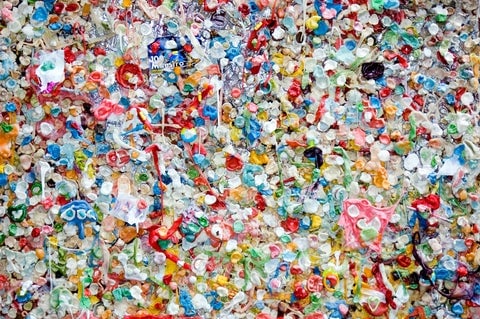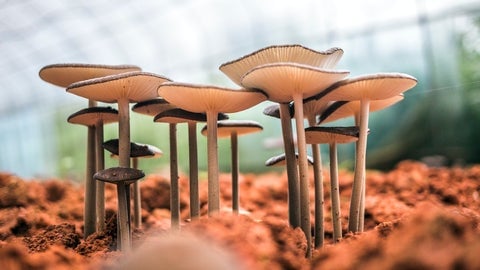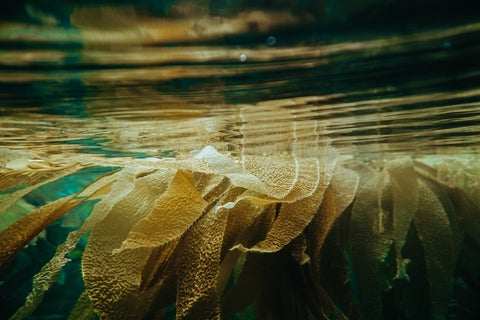Plastic-Free Packaging for Plant-Based CPGs: A Guide
When a consumer packaged goods (CPG) brand chooses its mission and values, it’s important to consult them when making all business decisions. If not, it can be damaging to the brand.
A recent survey found that 71% of consumers prefer to buy from companies that align with their own values. If a brand proclaimed to champion certain values, then their actions didn’t reflect these values, it could result in their customers losing trust — and that’s difficult to regain.

Many plant-based CPGs have missions and values in common. No surprises, really, as many consumers who switch to plant-based diets are driven by their own values to combat climate change or to improve their health. Sustainability, innovation, environment, empathy, honesty, and integrity are all examples of values that guide some of the biggest CPG brands in the world.
The packaging on your product will also reflect your brand's values: not just in how it looks or what it says, but also in what it’s made out of.
Many brands are now switching their product packaging from plastic to other alternatives.
The problem with plastics
You’re already reading an article about switching your CPG packaging to something more eco-friendly, so you probably won’t take much convincing. But if you’re still on the fence — whether for convenience or financial reasons — give this section a read and you’ll be sure to change your mind.
Plastic is known to be harmful to the environment, so it doesn’t make much sense for brands that are striving for sustainability to be putting more out into the world. Besides, 74% of consumers are willing to pay extra for sustainable packaging.
If you’re still using plastic in your CPG packaging, you may be deterring a lot of environmentally-conscious consumers who have sworn off single-use plastic from buying your product. More than half of the consumers in the US are highly concerned about the environmental impact of product packaging.
Sure, many brands are turning to recycled or recyclable plastic packaging, but is that good enough?
Even if it’s capable of being recycled, less than 2% of plastic waste that has been manufactured since the 1950s has actually been recycled.
It’s not always easy for the consumer to find recycling points. Plus, there are so many different types of plastics out there, and not all recycling plants have all of the correct facilities.
Switching to a more sustainable, plastic-free alternative would appeal to a larger audience — therefore generating more sales and revenue for your business. It’s also way better for the environment.
Dumping plastic (metaphorically speaking, of course) really is a no-brainer!
6 options for plastic-free packaging
Here are some ideas for ways that you could eliminate plastic from your CPG’s packaging. Some are pretty straightforward, others are rather creative. Have a browse and pick your favorites!
Paper packaging
When you think of sustainable packaging, it’s likely that a cardboard box pops into your mind. That’s probably because many brands turn to paper or cardboard packaging as the obvious sustainable alternative to plastic.
It’s easy to recycle virtually everywhere, plus the brown color of cardboard packaging immediately conveys the idea of sustainability to consumers, without having to say anything at all.
Over 70% of consumers said that they were more likely to buy products that are in paper or card packaging — they also thought it looked more premium.
Using recycled paper will gain you extra brownie points!
Beware of plastic tape and stickers. These sneaky packing additions can mute all of your efforts if it’s difficult to remove and thus non-recyclable. Don’t worry though, there are plastic-free tapes and stickers out there.
Plant-based plastics
If you’re manufacturing plant-based food, why not use plant-based packaging?
Sometimes known as bioplastics, this type of packaging is very similar to plastic in both look and feel, except that it’s not.
Sugarcane, vegetable fats, cornstarch, straw, and recycled food waste are just some examples of the materials that can make up bioplastics.
Some consumers prefer the efficient and hygienic nature of plastic — so with plant-based plastics, they’re getting the best of both worlds.

Mushroom root
They’re delicious, they’re healthy, and (apparently) they make great sustainable packaging! Who’d have thought that mushrooms could be so versatile?
One brand literally grows this biodegradable packaging by mixing mycelium — a.k.a mushroom root — with agricultural waste.
Fun fact, it’s the same ingredient used to manufacture Quorn.
This one would appeal to consumers not just for being so incredibly sustainable, but also for being so unique.
Bagasse
Think of polystyrene, then imagine that it’s sustainable — that’s bagasse. It’s sometimes referred to as sugarcane pulp, as it’s a by-product of sugarcane processing. Once the juice has been squeezed out of the sugarcane, you’re left with this eco-friendly packaging solution.
The pulp is blended with water then pressed into whichever packaging shape your CPG brand requires.
It’s a good alternative to paper, especially as it doesn’t require cutting down any trees. It’s biodegradable and compostable — breaking down in 30-90 days in commercial composting conditions — meaning that it’s entirely sustainable from start to finish!
Stone paper and plastic
If we told you that you could package up your CPG products using stone, you’d probably laugh. That would be far too heavy, right?
Wrong. Stone can be transformed into a paper-like packaging, offering yet another more sustainable, tree-free option. It can also be used as a plastic alternative, with the ability to be printed on and recycled. Did we mention that it’s also waterproof?
It’s made from calcium carbonate, one of the world’s most ample resources.

Seaweed bubbles
Have you ever eaten a drink? One UK startup has developed ‘Ooho water bubbles’, a sustainable alternative to plastic bottles.
These innovative, edible bubbles are way better for the environment — producing five times less carbon dioxide and requiring nine times less energy than plastic.
It’s actually cheaper to produce than plastic too!
The good news for beverage companies is that this unique packaging can be used for other liquids including soft drinks, spirits, and even cosmetics.
4 CPGs leading the way
Need to see plant-based packaging in action? Here are some of the leading brands using eco-friendly packaging:
Impact Snacks
This plant-based startup uses bio-cellulose wrappers to package its superfood bars. Not only is it biodegradable, but it’s also edible.
That’s one way to compost your packaging!
The brand is 250% carbon reclaimed, meaning that they remove more than double the carbon that they put out.
Teapigs
Not many people know this, but tea bags usually contain small amounts of plastic. The unknowing will often put their used tea bags into compost, which results in microplastics entering the earth.
Teapigs have received the Plastic Planet trademark, meaning that their tea bags — as well as their packaging — are all certified plastic-free. Their tea leaves are contained in temples made from cornstarch and paper, while their packaging is made with FSC certified paper board.
The brand encourages their customers to put their biodegradable tea bags into food waste rather than composting at home, just because they take a bit longer to break down.
Colonna
While they can give us convenient, delicious hits of caffeine, coffee pods are so bad for the environment. They usually contain plastic and an estimated 350,000 find their way into landfill each year.
Colonna have developed all-aluminum coffee pods which can simply be rinsed and recycled. They’ve recently introduced compostable pods so that caffeine lovers can be extra reassured about the sustainable fates of their coffee pods.
No Evil Foods
Not every plant-based CPG has found it easy to go plastic-free, especially if they weren’t that way from the start.
No Evil Foods boasts eco-friendly packaging with their kraft paperboard and plant-based inks, capable of being recycled or even composted at home.
The catch? The food inside is wrapped in plastic, which is disappointing to their customers.
However, the brand acknowledges this disappointment and is striving to become plastic-free. They are plastic negative, meaning that for every pound of plastic that they put out into the world, they remove two pounds from natural ecosystems.
Someone should let them know about stone plastic!
Wrapping up
What a glorious pun that was, if you don’t mind us saying.
But seriously, in short, plastic isn’t a great look for plant-based CPGs. It’s not a great look for any CPGs, but consumers expect you to set the example that the rest will eventually follow.
There are plenty of plastic-free options out there, including plant plastics, mushroom roots, seaweed, and stone! Getting creative with your eco-friendly packaging will impress the market even more.
Trust us, we’re the experts in mission-driven consumer packaged goods brands. Buffalo Market is the fastest growing distributor of food and beverage products that are good for the planet or good for people — so we really know our stuff.
If you’d like to work with us in getting your innovative plant-based products stocked on the right shelves, give us a call.


